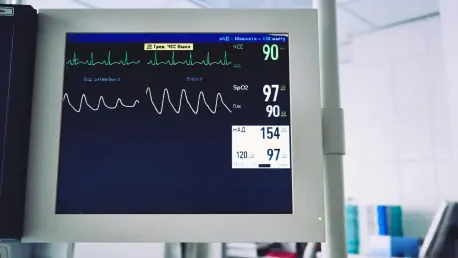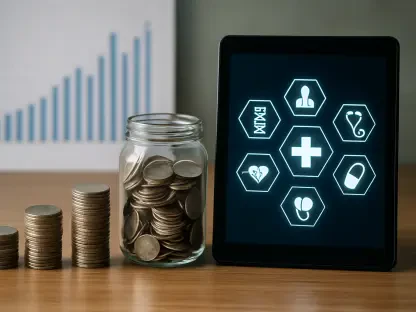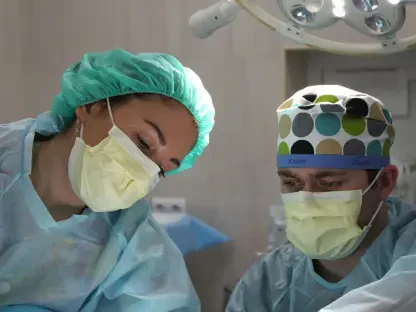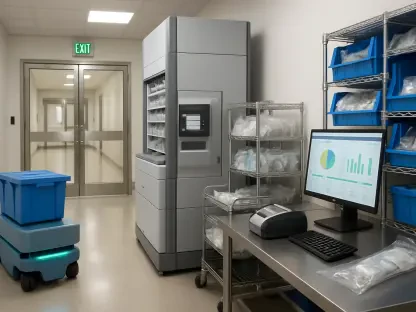In our latest interview, we have the privilege of speaking with James Maitland, an esteemed expert in robotics and IoT applications in medicine. With a comprehensive understanding of the intersection between technology and healthcare, James provides a unique perspective on the pivotal issues facing the Indian medical device industry.
Can you explain the recent import trends in the Indian medical device industry?
The import trends in the Indian medical device industry have been marked by significant increases across various categories. There’s a notable rise in the import of syringes, needles, and diagnostic reagent kits, with import values surging substantially. For instance, imports of syringes and needles have increased from $61 million to $111 million. These trends underscore the growing reliance on foreign products for critical healthcare needs.
What concerns does AIMED have regarding uncontrolled imports?
AIMED is deeply concerned that the influx of uncontrolled imports is jeopardizing the viability of domestic manufacturers. These imports can lead to severe underutilization of the domestic industry’s capacity, causing injuries not just to the businesses but also to the broader ecosystem that supports these manufacturers. The pressure from these imports makes it challenging for local players to compete, thereby threatening their sustainability.
Why is AIMED urging the imposition of safeguard duties?
AIMED is advocating for safeguard duties on 12 key medical device categories to protect domestic interests. These categories include syringes, needles, and diagnostic reagent kits, which have seen a 23 percent growth in imports. Such measures are seen as essential to prevent further market disruption and provide a level playing field for Indian manufacturers who are increasingly finding it difficult to compete with the inflow of cheaper imported goods.
How has the import of medical devices from China impacted the Indian market?
China’s contribution to the total increase in medical device imports is significant, accounting for approximately 33.47 percent. This makes China the largest exporter to India within this sector. The sheer volume of imports from China has heightened competition and added pressure on domestic companies to innovate and improve their offerings to maintain market share.
Can you discuss the impact of global trade disruptions, particularly the US-China tariffs, on the Indian medical device industry?
The US-China tariffs have created a ripple effect across global markets, including India’s medical device industry. These trade tensions have the potential to lead to the dumping of goods in India, as manufacturers seek alternative markets for their products. This could further exacerbate the challenges faced by local manufacturers who are already struggling against competitive pricing and import surges from other countries.
What is the Department of Commerce and DGFT doing to address these trade issues?
The Department of Commerce and DGFT are actively monitoring global trade developments, especially those related to tariff changes and import surges. They have established the ‘Global Tariff and Trade Helpdesk’ to assist stakeholders in navigating these complexities. The Helpdesk provides support on trade issues, including addressing import challenges and coordinating potential resolutions.
Can you provide insights into AIMED’s proposal for a Predictable Tariff Policy?
AIMED’s proposal for a Predictable Tariff Policy involves implementing a Basic Customs Duty of 15 percent on products that have over ₹100 crore in exports. This policy aims to protect domestic investment for at least five years, ensuring a more stable and predictable business environment for Indian manufacturers. The goal is to incentivize local production and safeguard against excessive reliance on imported goods.
What are the implications of possible tariff reductions under the ongoing EU and US negotiations?
Potential tariff reductions for EU and US products could substantially impact the Indian medical device industry by increasing competition from high-quality foreign goods. To mitigate these effects, India may need to bolster its domestic capabilities, perhaps through targeted support and incentives for local manufacturers to strengthen their competitiveness both in quality and cost.
How have export trends for Indian medical device manufacturers changed recently?
Export trends for Indian medical device manufacturers have seen a decline, dropping from 12 percent to 6 percent. Several factors contribute to this downturn, including intensified international competition and possibly the global economic climate. Despite these challenges, the import rate has remained relatively steady, underscoring persistent demand for medical devices within the country.
Could you elaborate on the significant foreign exporters to India within the medical device market?
The US and China are the leading suppliers of medical devices to India. Between April and December 2024, the US exported medical devices worth $243.52 million, while China followed with $170.71 million. Apart from these, other major exporters include Germany, Singapore, and the Netherlands, each playing a crucial role in meeting the demand for medical devices in India.
Do you have any advice for our readers?
For those involved in the medical device industry, it’s essential to stay informed about global trade developments and to seek ways to enhance local manufacturing capabilities. Investing in technology and innovation can help to counteract import pressures and maintain competitiveness in a rapidly evolving market.









